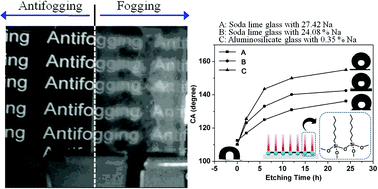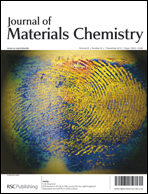Transparency of the glass substrate plays an important role in the performance of many optical and electronic devices. Herein, the authors have demonstrated a simple method to create a high performance wide–range anti-reflection layer on a glass surface by “carving” it with a hot alkali solution (95 °C). Morphology, composition, surface and optical properties were controlled by changing both the original composition of the glass substrates and etching time. Enhanced transparency (up to 97.7%) was achieved in a wide wavelength range. Superhydrophilic and antifogging properties were also demonstrated, which provide an advantage for optical and opto-electrical devices operating outdoors, in high humidity environments or underwater. In addition, the etched glass surfaces were modified to become hydrophobic (even superhydrophobic) by n-octadecyltrichlorosilane treatment. The glass etching mechanism was investigated and verified using energy dispersive spectra (EDS) and Fourier transform infrared (FTIR) absorption spectra analyses.

You have access to this article
 Please wait while we load your content...
Something went wrong. Try again?
Please wait while we load your content...
Something went wrong. Try again?


 Please wait while we load your content...
Please wait while we load your content...